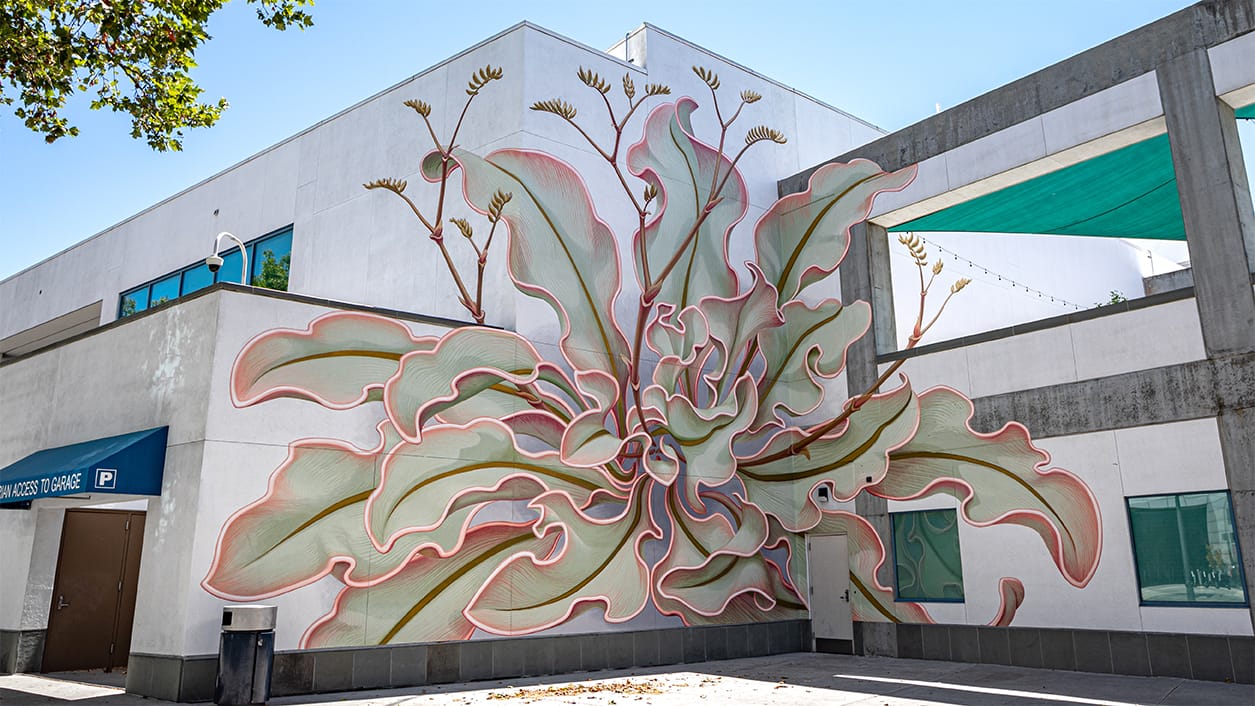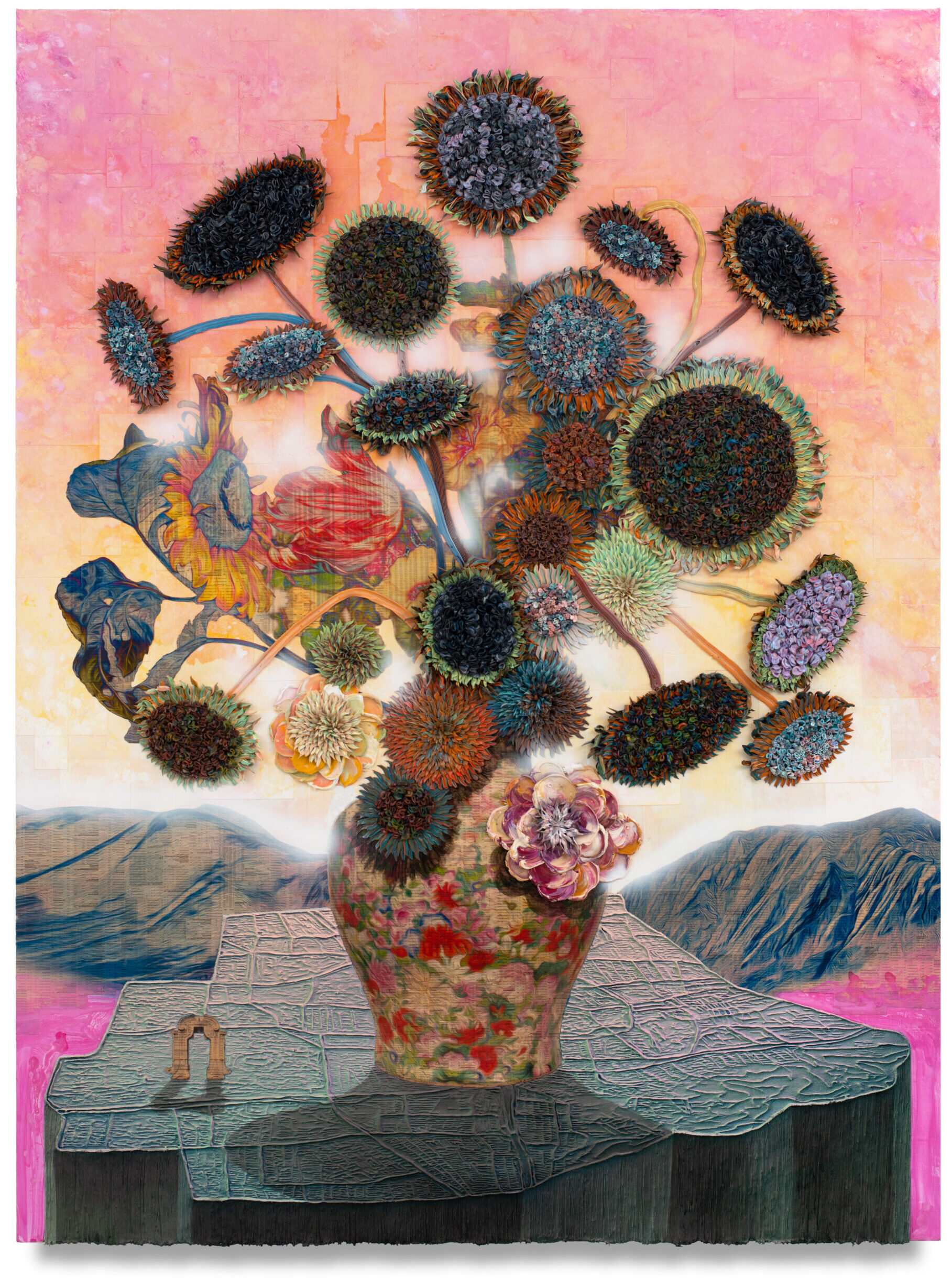“Patriarch Grove, Ancient Bristlecone Pine Forest, California” (2021), from the series ‘Old Growth,’ archival pigment print, 45 x 36 inches. All images © Mitch Epstein, courtesy of the artist and Yancey Richardson, New York, shared with permission
Sometime around the end of the last ice age—around 20,000 years ago—a single aspen seed rooted, sprouted, and began cloning itself in what is now central Utah. Known as Pando, which comes from the Latin “I spread,” the world’s largest known organism continues to grow today, comprising more than 40,000 individual trees. Every trunk emerged as a shoot from the same root system, and scientists estimate Pando weighs about 13 million pounds. That’s one massive plant.
For photographer Mitch Epstein, the phenomenal resilience, scale, and lengthy lifespans of trees forms the basis of his ongoing series Old Growth. From the world’s most voluminous sequoias to the most ancient weathered and gnarled bristlecone pines that can live more than 4,000 years, he captures remarkable stalwarts around the U.S.
Starting in 2017, Epstein traveled the country in search of the oldest known trees, like bigleaf maples, eastern white pines, cedars, and bald cypresses. Sequoias and bristlecones, for example, are known as relict species, or relics, have survived from an earlier period when they were much more widespread. Epstein creates a crucial record of the trees as their ever-shrinking habitats are increasingly threatened amid the climate crisis.
Both new and mature forests play a significant role in capturing carbon, which helps to keep greenhouse gases out of the earth’s atmosphere. The older trees just store much more of it. Estimates vary depending on definitions of “old growth,” “original,” or “frontier” forests, but in the U.S., humans are estimated to have destroyed as much as 96 percent of these areas for logging, agriculture, and development.
Through photography, Epstein focuses on the inherent tension of time. For trees that have stood for millennia, a split second of its life captured through a lens draws attention to its bewilderingly vast lifespan. A solo exhibition of Epstein’s large-format images opens soon at Yancey Richardson, and a new book published by Steidl is slated for release in November.
Old Growth runs September 5 to October 19 in New York City, and from there it travels to the Gallerie d’Italia in Turin and opens on October 16. You can pre-order your copy of Old Growth now from Bookshop, and learn more on the artist’s website.
“Maple Glade, Hoh Rain Forest, Olympic National Park, Washington” (2017), from the series ‘Old Growth,’ archival pigment print, 36 x 45 inches
“Congress Trail, Sequoia National Park, California” (2021), from the series ‘Old Growth,’ archival pigment print, 45 x 36 inches
“Sitka Spruce (Tree of Life), Olympic National Park, Washington” (2021), from the series ‘Old Growth,’ archival pigment print, 58 x 72 inches
“Bigleaf Maple, Olympic National Park, Washington” (2021), from the series ‘Old Growth,’ archival pigment print, 72 x 58 inches
“Sequoia National Park, California” (2022), from the series ‘Old Growth,’ archival pigment print, 72 x 58 inches
“Ancient Bristlecone Pine Forest, California” (2022), from the series ‘Old Growth,’ archival pigment print, 72 x 58 inches
“Coastal Redwood (Boy Scout Tree), Jedediah Smith Redwoods State Park, California” (2022), from the series ‘Old Growth,’ archival pigment print, 45 x 36 inches
“Bald Cypress, Black River, Cape Fear, North Carolina” (2023), from the series ‘Old Growth,’ archival pigment print, 36 x 45 inches
Do stories and artists like this matter to you? Become a Colossal Member today and support independent arts publishing for as little as $5 per month. The article In ‘Old Growth,’ Mitch Epstein Travels the U.S. to Capture Monumental Ancient Relics appeared first on Colossal.


